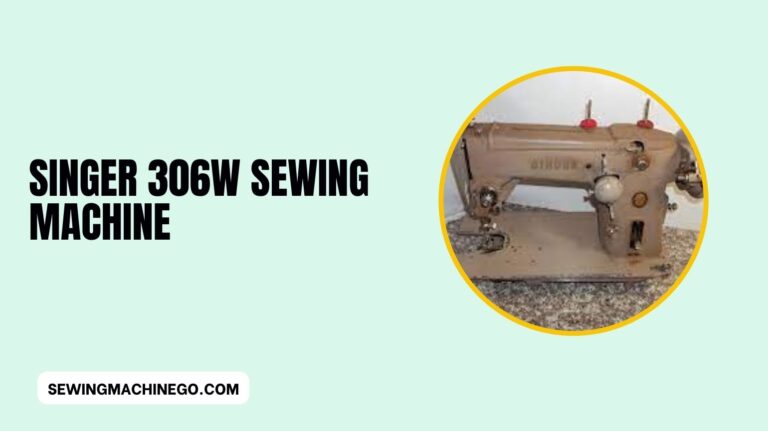How to Sew Hole in Jeans? (Easy Steps Guides) Of 2023
Sewing a hole in your jeans isn’t just about fixing a tear; it’s a chance to showcase your creativity while preserving your favorite denim. How to Sew Hole in Jeans? Jeans often carry memories and character, making their repair a meaningful endeavor.
In this guide, we’ll explore the art of sewing holes in jeans, a skill that not only extends the life of your beloved denim but also allows you to add a unique flair through creative mending techniques.
From basic patching to decorative stitching, let’s delve into the methods that will help you breathe new life into your jeans while embracing their individuality.

How to Sew Hole in Jeans?
Sewing a hole in jeans can be done easily with a few steps:
Materials You’ll Need:
- Jeans with a hole
- Matching thread
- Needle
- Scissors
- Iron-on patches or fabric (optional)
Steps:
- Prepare the Jeans:
- Clean the area around the hole. Cut away any loose threads or frayed edges. Iron the jeans to make the area flat for easier sewing.
- Choose Your Method:
- You can either sew the hole closed by hand or use a sewing machine if available. Both methods work, but sewing by hand might give you more control over the process.
- Hand Sewing Method:
- Thread a needle with the matching thread, making sure it’s double-threaded and knotted at the end.
- Start sewing from the inside of the jeans to hide the knot.
- Use a simple running stitch or a backstitch to secure the edges of the hole together. Stitch along the edges of the hole, pulling the thread tight to close the gap.
- Continue stitching until the hole is completely closed, then knot the thread securely and trim any excess.
- Machine Sewing Method:
- Set your sewing machine to a medium stitch length and use a denim needle if available.
- Place the jeans under the sewing machine, starting a little before the hole.
- Stitch along the edges of the hole, making sure the fabric is aligned and the stitches are secure. Backstitch at the beginning and end to lock the thread in place.
- Optional: Reinforcement:
- To reinforce the repaired area, especially if the fabric is weak around the hole, you can use iron-on patches or sew a fabric patch on the inside of the jeans. This extra layer will provide more durability and prevent the hole from reopening.
- Final Touches:
- Trim any excess thread and inspect your work to ensure the hole is securely closed.
Importance of Repairing Holes
Here are the Importance of Repairing Holes:
Cost-Effective Alternative
In a world that often promotes consumerism, repairing holes in your jeans offers a cost-effective alternative to constantly buying new pairs. Not only does this save you money, but it also contributes to a more sustainable approach to fashion.
Personal Attachment
Many of us develop a personal attachment to our favorite jeans.
Whether they hold memories of adventures or simply fit like no other pair, the thought of parting with them can be disheartening. Learning to repair holes allows you to preserve the character and history of your favorite denim.
Assessing the Damage
Before diving into the repair process, it’s crucial to assess the damage. Identify the size and location of the hole, checking for any frayed edges or weakened fabric around it.
This assessment will guide the approach you take in repairing the jeans effectively.
Gathering Materials
To get started, gather the necessary materials: a needle, thread (matching the color of your jeans), and a fabric patch for larger holes.
If you’re feeling creative, consider optional materials for decorative patches to add a personalized touch to your repair.
Preparing the Jeans
Begin by washing and drying the jeans. This not only provides a clean workspace but also ensures that any shrinkage occurs before the repair. Lay the jeans on a flat surface, smoothing out any wrinkles or folds.
Choosing the Right Thread and Needle
Selecting the right thread and needle is crucial for a successful repair. Match the thread color to your jeans for a seamless finish, and opt for a sturdy needle designed for denim. This ensures that the repair withstands the rigors of daily wear.
Basic Stitching Techniques
Here are the Basic Stitching Techniques:
Simple Straight Stitch
Start with a simple straight stitch, guiding the needle through the fabric and pulling it taut.
Reinforce weak spots around the hole by stitching a small distance beyond it. This basic stitching technique provides a strong foundation for the repair.
Using a Fabric Patch
For larger holes, a fabric patch is a lifesaver. Apply it following these steps: cut the patch to size, secure it over the hole, and stitch around the edges. This not only covers the hole but adds an extra layer of durability to the repaired area.
Decorative Patching Options
Why stop at a simple repair when you can turn it into a fashion statement? Explore decorative patching options, such as embroidery or unique fabric patches, to add flair to your jeans.
Express your creativity while extending the life of your denim.
Tips for Seamless Repairs
Maintaining tension while stitching is key to a seamless repair. Ensure that the stitches neither pucker nor sag, blending the repair with the jeans’ original design.
This attention to detail results in a polished and virtually invisible repair.
Creating seamless repairs requires attention to detail and precision. Here are some tips to achieve seamless results:
- Match the Thread: Use thread that closely matches the color and thickness of the fabric. This helps the stitches blend in seamlessly.
- Right Needle Size: Choose a needle appropriate for the fabric weight. For denim or heavier fabrics, use a sturdy needle to ensure smooth stitching.
- Secure the Area: Begin by securing the edges around the hole or tear to prevent further unraveling. This could involve using fabric glue or small stitches along the tear’s edge.
- Patching Techniques: For larger holes, consider using patches cut from similar fabric. Secure them underneath the hole and stitch around the edges for a seamless integration.
- Blend Stitches: Mimic the original stitch pattern as closely as possible. Use small, even stitches for an inconspicuous repair.
- Ironing: Press the repaired area with an iron to flatten the fabric and ensure a smooth finish.
- Practice Patience: Take your time with each step of the repair process. Rushing might lead to visible mistakes.
- Finishing Touches: Trim any excess thread and inspect your work under different lighting to ensure the repair is seamless.
Caring for Repaired Jeans
Preserve your repair by adopting proper care practices. Wash and dry your jeans inside out to protect the repaired area. Consider air-drying for additional gentleness, ensuring your jeans remain in top-notch condition.
Caring for repaired jeans ensures their longevity and the durability of your mending work. Here are some tips:
- Gentle Washing: Wash your repaired jeans inside out and in cold water. This helps preserve the color and prevents stress on the repaired area.
- Mild Detergent: Use a mild detergent to avoid harsh chemicals that might affect the repaired spot or fade the fabric.
- Avoid Dryers: Air-dry your jeans instead of using a dryer. High heat can weaken the repaired area and affect the stitches.
- Store Properly: Fold your jeans neatly when storing to prevent unnecessary stress on the repaired part.
- Regular Check-Ups: Periodically inspect the repaired area for any signs of loosening stitches or additional wear. Fix any issues promptly to prevent further damage.
- Handle with Care: Be mindful when wearing or handling the jeans to prevent undue stress on the repaired spot.
Common Mistakes to Avoid
In the process of DIY jean repair, certain mistakes can compromise the results. Avoid overlooking small holes that may worsen over time, and always use the right thread and needle for the denim. Attention to detail ensures a successful repair.
Here are common mistakes to avoid when sewing a hole in a shirt:
- Using the Wrong Thread or Needle: Using thread that doesn’t match the fabric or a needle that’s too thick can create visible, uneven stitches.
- Skipping Preparation: Failing to properly prepare the area by securing the edges or stabilizing the fabric can lead to further tearing or distortion during the repair.
- Neglecting Tension and Stitch Length: Inconsistent tension or stitch length can result in puckering or an uneven appearance on the repaired area.
- Not Choosing the Right Patch: If using a patch, selecting one that doesn’t match the fabric in weight or color can make the repair stand out rather than blend in seamlessly.
- Rushing Through the Process: Rushing the sewing process can result in sloppy stitches or missed spots, affecting the durability and aesthetics of the repair.
- Ignoring Fabric Grain: Failing to align the fabric grain properly when patching or stitching can cause the repaired area to appear distorted or misshapen.
- Neglecting Finishing Touches: Skipping final touches such as trimming excess threads or pressing the repaired area can leave the repair looking incomplete or untidy.
By avoiding these common mistakes and taking your time with each step, you can achieve a more seamless and professional-looking repair on your shirt.
Benefits of DIY Jean Repair
Here are the Benefits of DIY Jean Repair:
Satisfaction of Preservation
Experience the satisfaction of preserving your favorite pair of jeans. Each successful repair adds to the longevity of your denim, allowing you to enjoy them for years to come.
Sustainable Fashion Practices
Contributing to sustainable fashion practices is another significant benefit. By repairing rather than discarding, you actively participate in reducing textile waste and minimizing your environmental footprint.
When to Seek Professional Help
While DIY repairs are empowering, there are instances where professional help is necessary. Recognize when the damage is beyond your skill level, and consider seeking a reliable denim repair service for intricate fixes.
People also ask
How do you fix distressed jeans that ripped too much?
When distressed jeans have ripped too much, consider a stylish revival by turning them into shorts or cropped pants.
Embrace the distressed look by fraying the edges further or strategically adding decorative patches.
Alternatively, transform them into unique denim shorts with a raw hem for a trendy and customized appearance. Don’t be afraid to get creative and make the most of the distressed aesthetic.
Can you sew jeans with a regular sewing machine?
You can sew jeans with a regular sewing machine. Ensure you use a sturdy denim needle to handle the thickness of the fabric.
Adjust your machine’s settings for a longer stitch length to prevent the needle from breaking.
Additionally, consider using a heavy-duty thread that matches the color of your jeans for durability.
Take it slow, and if your machine struggles with multiple layers, use a manual hand wheel to guide it through thicker sections.
With the right tools and patience, you can successfully sew and repair jeans using a regular sewing machine.
How do you sew a patch on jeans without a sewing machine?
Sewing a patch on jeans without a machine is simple. First, clean and dry the jeans, ensuring a smooth workspace.
Cut the patch to cover the hole, leaving a slight overlap. Use a strong needle and matching thread, employing a simple whipstitch around the patch’s edges.
Pull the thread tight for secure stitching. Repeat until the patch is firmly attached, and tie off the thread with a knot.
This hand-sewn method offers a durable and DIY solution for patching jeans without the need for a sewing machine.
How do you rip holes in jeans?
To intentionally rip holes in jeans for a distressed look, start by marking the desired locations with chalk. Use sandpaper or a cheese grater to thin the denim in those areas.
For more defined holes, make small cuts with scissors and then pull the threads to widen them.
Alternatively, employ tweezers to pluck out vertical threads, creating a frayed effect. Experiment with the level of distressing until you achieve the desired look.
Remember, start small, as you can always increase the distress, but it’s challenging to undo it once done.
Conclusion
In conclusion, learning how to mend a hole in jeans is a valuable skill that extends the life of your favorite denim garments.
By following the steps outlined in this guide, you can seamlessly repair tears, preserving the integrity of your jeans and adding a personal touch to your fashion.
Remember to select appropriate materials, take your time with each stitch, and embrace the opportunity to give new life to your beloved jeans.
Sewing a hole in jeans isn’t just about restoration; it’s a creative act that allows you to showcase your craftsmanship and keep your favorite pair in rotation for longer.

Hi, I am Alice, and I am your perfect guide to the world of sewing machines. With over 10 years of experience in the sewing industry, I am passionate about sharing my knowledge and expertise to help you make the most of your sewing journey. about me






